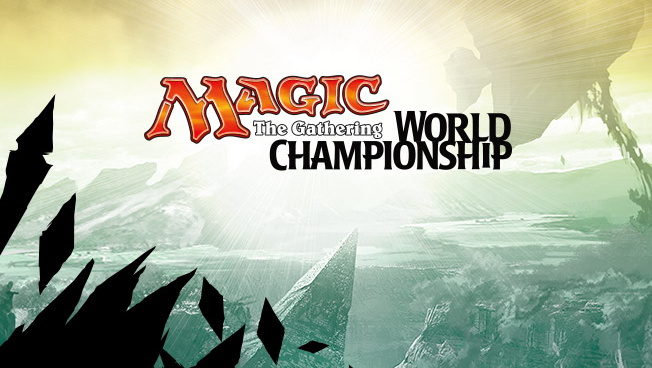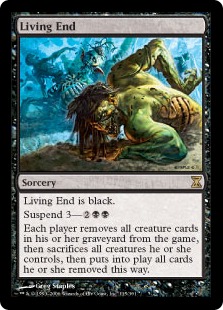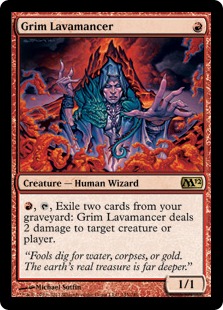Are you a Quiet Speculation member?
If not, now is a perfect time to join up! Our powerful tools, breaking-news analysis, and exclusive Discord channel will make sure you stay up to date and ahead of the curve.
This past weekend was an exciting one for Modern. While the SCG Invitational was Standard/Legacy, and the World Championships was what felt like every format invented ever (sidebar: really hoping for a Tiny Leaders/Commander Pro Tour next year) Modern still got some love in the form of four rounds of the 24 best players in the world, and the SCG Modern Premier IQ in Somerset. Sensing the impending hype from these results, I figured it would be a good idea to take a step back and give some context to what we are seeing.

What we’re looking for here is not really “what deck performed well this week” but really going under the hood to discover “how” and “why” things ended up looking the way they did. This will end up looking pretty analytical at the end, so let me know in the comments if you agree/disagree with my thought process.
[wp_ad_camp_1]
Worlds
While I have not competed (and more than likely will never compete) in Worlds, there are some details about the event that are apparent just from watching the coverage and reading some reports from competitors. On one hand there’s the desire to gain an edge/”break it”, competing with the desire for a competitor to “hedge” to devote more time/energy to preparing for another format. Read every competitor’s tournament reports and all of them will talk about how impossible it is to test for four formats at once. This is absolutely essential to keep in mind while analyzing results; it’s just the honest truth that the top performing/worst performing decks must be viewed differently than “real” results, as a four round event is a much different “stress test” than a grueling, two-day Grand Prix. Multiple factors go into deck and individual card choices, including but not limited to testing time, knowledge of each format, informational advantage, deck familiarity, metagame chasing/leveling, and hedging. We could break all of these down but most are pretty self-explanatory.
6 Affinity
4 Living End
3 Bogles
2 BW Tokens
1 Jund
1 Abzan
1 Grixis Twin
1 UR Twin
1 Temur Twin
1 Merfolk
1 Burn
1 UR Pyromancer Control
1 UW Control
The most apparent piece of information we can glean from these metagame numbers is the prevalence of “goldfish decks”. A discussion about whether Burn/Merfolk can also be considered goldfish decks is relevant, but outside the scope of this article (plus Jordan Boisvert has done an excellent series already on this) so we won’t get into that. For now, it’s important to realize that Affinity, Living End, and Bogles all have a few things in common; they are fast, proactive, mainly do their own  thing, and for the most part play themselves (sorry Bogles players). Unlike reactive/interactive decks like Twin and BG/x, the most common decks at Worlds focused primarily on goldfishing successfully. This suggests that most of these competitors chose a deck that would let them devote more time to other formats; the nature of Affinity/Living End/Bogles means that their gameplan will usually stay the same regardless of matchup, meaning pilots wouldn’t have to spend precious time getting acquainted with matchups and sideboarding.
thing, and for the most part play themselves (sorry Bogles players). Unlike reactive/interactive decks like Twin and BG/x, the most common decks at Worlds focused primarily on goldfishing successfully. This suggests that most of these competitors chose a deck that would let them devote more time to other formats; the nature of Affinity/Living End/Bogles means that their gameplan will usually stay the same regardless of matchup, meaning pilots wouldn’t have to spend precious time getting acquainted with matchups and sideboarding.
Another factor that contributed to the metagame we see is the metagaming process itself. Going into the event, Grixis Control was on most of the competitors’ minds as one of the best, if not the best, strategies in Modern. It’s no surprise, then, that the three most played archetypes all have good to great matchups against Grixis. One could look at the lack of Grixis Control in the metagame of Worlds as evidence that the deck is “on the downswing” or “not good”, when the reality is that the competitors probably wanted to avoid the Level 0 deck choice.
Breakout Decks at Worlds
Going a little deeper, there are some things we can take away from this event. Yuuya Watanabe built on the growing U/W Control resume with an impressive new take, using Dragonlord Ojutai alongside Eiganjo Castle and Minamo, School at Water's Edge to set up a powerful endgame.
"U/W Control, Yuuya Watanabe - Worlds 2015"
Notable in this list is the absence of Snapcaster Mage and Mana Leak, which allows the list to play maindeck Kitchen Finks alongside Wall of Omens and Restoration Angel to slam the door on decks looking to grind, like Abzan and Grixis. No Mana Leaks puts us in a pretty bad spot against combo though, so in a broader field it looks like at least a few copies need to find their way back into the list. The sideboard contains some great tools as well, like Glen Elendra Archmage against Twin/Grixis/Burn and Threads of Disloyalty (a criminally underplayed card). Remember that you can Threads a creature and then Restoration Angel in response to removal/Abrupt Decay on the Threads to bounce the creature and return it under your control, stealing it permanently.
"U/R Pyromancer Control, Shaun McLaren - Worlds 2015"
Moving on, Shaun McLaren shockingly abandoned Jeskai in favor of consistency in the form of U/R Pyromancer Control. Self-described as “kind of a mixture between U/R Delver, Grixis Control, and Jeskai Control”, Shaun eschewed both Kolaghan's Command/Terminate/Gurmag Angler and Delver of Secrets in favor of a cheap, consistent core built around interaction and the power of Grim Lavamancer. Against a field of Affinity and Delver decks, Shaun would run the tables, but in his StarCityGames article he acknowledges Yuuya’s U/W deck and Tron as bad matchups. Dropping the black splash really cuts down on the power that he would have if he was Grixis, and it’s not clear that me that Grim Lavamancer/Gitaxian Probe/Young Pyromancer is better than the black cards against a diverse field. Notably absent is Delver of Secrets (who would fit well in this deck, as Delver becomes a lightning rod for removal which makes our Pyromancers and Lavamancers better) but this was undoubtably a clear decision made by Shaun, who clearly wanted to be the control in many matchups. Delver of Secrets commits us (usually) to an aggressive line, while Shaun was able to sit back and craft the game to a point where he could drop a Young Pyromancer and slowly accumulate value, rather than trying to burn the opponent out before they stabilize. While he made some significant changes, this deck is at its core a U/R Delver deck without Delver of Secrets, which we most definitely want against a diverse field.
Against a field of Affinity and Delver decks, Shaun would run the tables, but in his StarCityGames article he acknowledges Yuuya’s U/W deck and Tron as bad matchups. Dropping the black splash really cuts down on the power that he would have if he was Grixis, and it’s not clear that me that Grim Lavamancer/Gitaxian Probe/Young Pyromancer is better than the black cards against a diverse field. Notably absent is Delver of Secrets (who would fit well in this deck, as Delver becomes a lightning rod for removal which makes our Pyromancers and Lavamancers better) but this was undoubtably a clear decision made by Shaun, who clearly wanted to be the control in many matchups. Delver of Secrets commits us (usually) to an aggressive line, while Shaun was able to sit back and craft the game to a point where he could drop a Young Pyromancer and slowly accumulate value, rather than trying to burn the opponent out before they stabilize. While he made some significant changes, this deck is at its core a U/R Delver deck without Delver of Secrets, which we most definitely want against a diverse field.
SCG Modern Premier IQ Somerset
"U/W Control, Daniel Villamizar - 1st"
What can I say, Yuuya piqued my interest. I have now been crushed by this basic strategy in my last two Modern events (Grand Prix Charlotte and SCG Charlotte) and I’ve decided to stop writing it off and really dive under the hood to see what makes this deck tick. Path to Exile remains an excellent reason to play White, and if the control player can get ahead of their opponent to the point that Mana Leak becomes great, the deck should have an easy time moving into the lategame and slamming a haymaker. Speaking of haymakers, this deck goes all in, playing a Jace, Architect of Thought alongside Gideon Jura and (count ‘em) two Sphinx's Revelation. Employing Azorius Signet to both fix mana (as we are playing 4 Tectonic Edge and a Ghost Quarter) and ramp us into our expensive bombs, Daniel has his eyes set on the lategame and knows what he needs to get there (read: Kitchen Finks). Since playing with Kitchen Finks in the board of Joseph Herrera’s SCG Charlotte winning Jund list, I’m convinced that Finks is one of the best cards in Modern without a great home.
Conclusion
Other than that, three Jund decks in the Top 8 is interesting, and gives more weight to Joe’s great finish the week before for the Jund camp. I still think Grixis Control is favored slightly in the matchup, but the real secret to Jund’s success is, in my mind, the absence of Tron and Amulet at the top tables. Notice these decks were also absent at Worlds? I remember a few months ago during GP Charlotte prep that you absolutely had to have a plan against these decks, and everyone was diluting their manabases to try and squeeze in Ghost Quarter. While I’m not familiar with either strategy, it seems like Tron and Amulet could be excellent choices in a Jund/UW Control prominent metagame. I don’t think we’re quite there yet, as Modern moves relatively slowly, but another week of great Jund results and we could be looking at a Tron resurgence. What do you think? Am I way off base? Let me know in the comments, and be sure to stop by my Twitch stream as I take some of these Modern decks for a test drive! See you there!
Trevor Holmes
The_Architect on MTGO
Twitch.tv/Architect_Gaming
Twitter.com/7he4rchitect





“Unlike reactive/interactive decks like Twin” LOL I stopped right there … seriously WTF
What’s wrong? Twin plays lost of it’s match-ups in control fashion to make sure nothing will disrupt combo and that threat is one of it’s strongest weapons.
Twin is extremely reactive and interactive. Although the deck has a combo finish, it plays mostly like a control deck and many top Twin players often close out games off a control Plan B (you could even argue it’s a control Plan A with a combo Plan B). It’s a huge misconception to think Twin is non-interactive, especially the UR versions of the deck.
@Firefly This is probably the single most stupid comment i ever came across online underneath a Magic topic.
Twin is basically the control deck of the format, and uninformed (most likely upset) comments like yours do nothing but spreading misinformation.
This is just a nitpick at one of your sentences, overall I agree with most of the article, but as a player from both sides I feel like Jund preys on the Amulet match up quite a bit. The discard effect is still pretty strong and it’s fast enough (unlike Abzan) to actually get a clock before the important six mana play for Amulet. I wouldn’t say it’s heavily favored vs Jund, as Amulet isn’t a cakewalk for any deck that isn’t Merfolk or has Blood Moon, however one or two discard spells followed up by a goyf into Liliana would definitely put the lights out on most great Bloom hands as it requires so many more pieces than other combo decks (it is more resilient than other combo decks though but that’s a whole another topic).
What did you make of Abzan in a U/W / Jund dominated meta? I feel like the Supreme Verdicts could be very difficult for Abzan to handle vs UW but it does grind better than Jund. I haven’t seen the match up and it’s relevant to my interests as I’m thinking of hopping off the Amulet train to go back to Abzan.
Amulet is a cakewalk to Infect (wich isnt Merfolk and does not have Blood Moon), to Grishoalbrand (wich isnt Merfolk and does not have Blood Moon. Well, it does, but they dont even need it in the matchup). to Elemental Combo (wich isnt Merfolk and does not have Blood Moon), to 8-rack (yep, wich isnt Merfolk and does not have Blood Moon). It even loses to Mill! (For real, Boomerang screw us).
If after all that, the deck still loses to Jund. Fuck it, jump right off.
Excellent points, revisiting the matchup I can definitely see how Jund would be favored, Amulet requires a certain combination of pieces to execute its’ gameplan that Jund can disrupt more effectively with discard. I’ve always felt that Abzan is the weaker version of Jund in a control heavy metagame, Part of this is based on my bias against Siege Rhino in Abzan, four mana is a LOT of mana for 4/5 + Lightning Helix. It makes up for this in Lingering Souls, but I am a bigger fan of Kolaghan’s Command/Abbot of Keral Keep/Fulminator Mage options instead.
You’re right, Tron would be EXCELLENT in a metagame filled with Jund and U/W Control. The strategy against Jund is to unleash an endless stream of Wurmcoil Engines whereas Jund wants to land some early pressure and keep you off Tron as long as possible.
The U/W list runs path, so Wurmcoil is instantly boarded out (or brought back if they don’t have path post board). I’d start with the basic “anti-Twin package” of Rending Volleys and play the “control route” to Emrakul, though there is plenty of incidental hate, so it looks like the matchup is more challenging than the old UWR control.
I don’t think there was much Tron at Worlds given the skill requirement to play the deck well. It’s a far cry from “hurr-durr-Karn-I win”, but the decisions all head in the same direction (get Tron, control board, cast Emrakul – this can get boring for some). You aren’t rewarded for individual skill with the deck as well as other decks, be it individual plays (Twin), deck construction (Jund), etc. At the same time, fewer of your misplays result in a game loss. If I knew I had an advantage with a high level of skill then I would want to play a more interactive, decision-intensive deck to fully utilize that advantage.
I would welcome a UW Control/Midrange shell. The question is, do we follow a blueprint similar to Yuuya and Daniel Villamizar, or do we go back to the SCG at Charlotte (IIRC) with the guy rocking the likes of Lone Missionary? I think both lists are cool, it’s just a matter of which one is going to get you there most often.
Maybe no build of UW/x is going to end up being the “core” build? It’s possible that the success of UW will be that it’s highly adaptable, but each build will only be good in a particular meta. So in a very grindy meta, the Emeria builds can wear down most every other deck, where as a meta full of linear/combo decks will want a UW deck focused on quick stack interaction and slightly faster cornering?
It’ll be interesting to watch it develop over the course of the next few events.
Great points, and I think this will be closer to the truth. U/W as an archetype lacks a lot of the “raw power” in the format (namely, the BG/x options) but has proven itself to be capable of competing. With the right build, on the right weekend, UW can perform well (as we’ve seen) but I don’t think the deck has a strong enough foundation to make it a week to week staying power.
Great article, but something in the opening sentences bothered me, something that “Spike” players will never understand: Commander/EDH should Never be a tournament style format IMO, keep Commander Causal! 😀 Much love!
Hey trevor why does your bio at the bottom of the article say you started playing mtg in 2011? I thought you started when you were a kid?
I’ve been playing random card games with my dad since I was a kid, but we only picked up Magic around Shards of Alara block 🙂